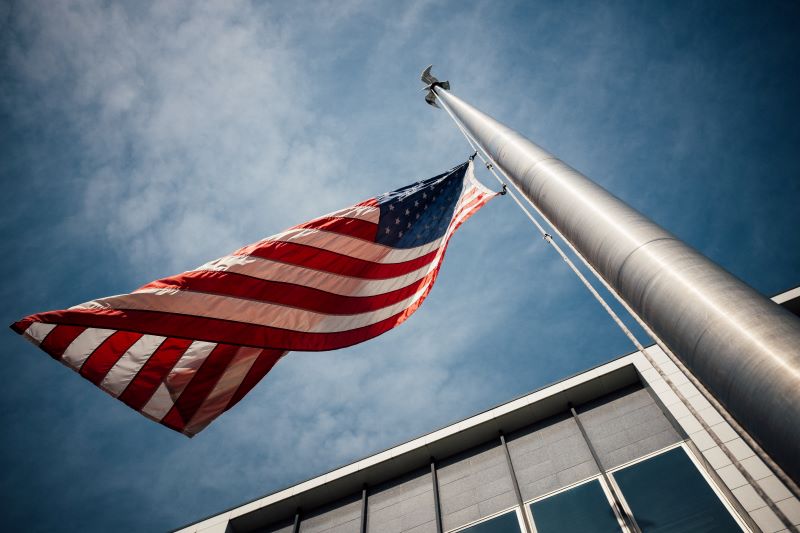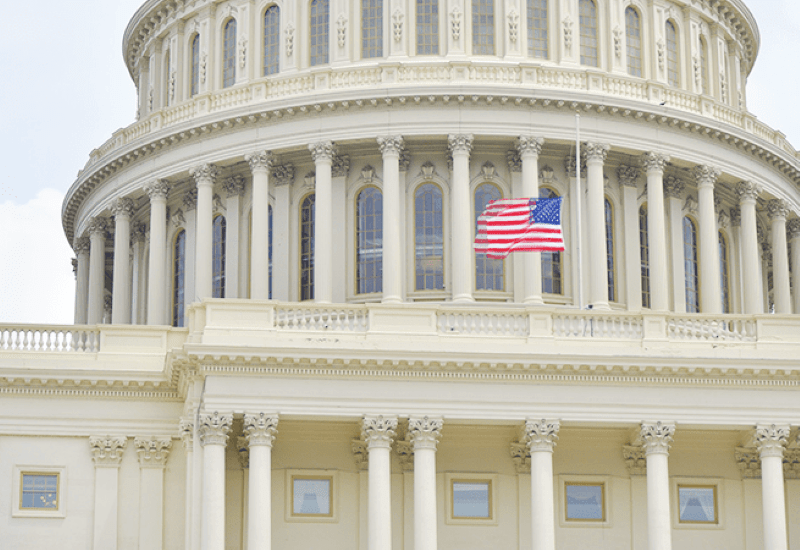Home


Resource Center
Government facilities take on some unique responsibilities. They have to ensure safety for employees tasked with delivering critical public services and provide consistent help and support to the constituents they serve. A key element in that picture is reliable communications, and that means good cell signal.
That isn’t always easy to achieve. Government facilities can face a number of obstacles to quality cell phone signal that are best compensated for by distributed antenna systems (DAS) from WilsonPro.
Reasons for Poor Cell Signal in Government Buildings
Several factors can lead to inadequate signal quality in government facilities. Some of them are common to many commercial facilities, while others tend to occur more often in state and federal buildings.
The main point to understand is that cell signals are just radio signals sent at certain frequencies. Their strength is most objectively measured in decibel milliwatts or dBm. 4G LTE signals are long-range signals at a specific set of frequency bands between 700 and 2600 MHz. 5G delivers higher speeds and less latency by using much higher frequencies (24.25 GHz and up), called millimeter wave technology.
With either type of network, if something interferes with the radio waves either getting to your device or getting from that device back to the cell tower, the result is weaker cell phone signal.

Building Materials
Built to last, government buildings are often constructed using large amounts of steel and concrete. Unfortunately, those are precisely the materials that can interfere extensively with cell phone signals. Concrete can cut signal strength by up to 20 dBm, while metal can reduce it by anywhere from 32 to 50 dBm.
Combine those materials with modern forms of tinted and low-E glass, which are increasingly common in environmentally-friendly building design, and you can have serious cell signal problems.

Secure Design
Where government buildings need to have highly secure areas, the challenges from building materials can get even more acute. Those kinds of areas have to be extensively reinforced, often using just the kinds of materials that can interfere with signal the most.
A related problem is that many buildings place secure areas in underground floors. Being underground compounds the problem of interference from the structure even further, for the same reason that poor reception is common in subway tunnels. There’s simply too much concrete and metal above you for the signal to get through.
EM Interference
Electromagnetic (EM) interference with wireless can occur when multiple devices and users are transmitting using the same radio frequency bands and when those signals conflict in some way. EM interference can take many forms, causing problems such as annoying reductions in call quality and data speed or outright interruption of signal when a device mistakes a non-relevant signal for a carrier signal.
In a building with a 5G network, extremely high-frequency bands are being transitioned from government-only usage to consumer usage. As that transition happens, the potential for accidental EM interference with the millimeter-wave signals that distinguish 5G service can be a real concern.
Vulnerable Off-Site Infrastructure
An increasing number of critical public services depend on cellular telephone networks whose underlying physical infrastructure can be vulnerable. Problems with infrastructure, especially in the wake of natural or man-made disasters, can lead to the weakening or interruption of cell signal precisely when it’s needed most urgently.
Remote Locations
A leading cause of poor cellular reception is simply the result of the distance between a facility and the nearest cell tower or network elements. This is a particular problem for 5G, since its high-frequency transmissions have shorter ranges and as yet lack the infrastructure needed for consistent coverage outside certain urban areas. It can still be a problem for 4G LTE signals, as well.
Many government facilities are, for one reason or another, located in remote areas. Sometimes they’re offices built to serve isolated rural areas or research facilities that operate in less developed locations. Correctional facilities, for example, can often be found at physically remote sites. In all these cases, wireless service can suffer.
How Passive DAS Compensates for Poor Cell Signal
DAS (distributed antenna systems), also called cellular repeater systems, are a sophisticated technology that operate according to a relatively simple principle. These systems consist of:
- A donor antenna that captures a cell signal outside the building.
- A repeater that then amplifies the signal strength significantly.
- An indoor antenna — or system of antennas — to redistribute the signal inside the building.
WilsonPro and its partner companies custom-design DAS solutions for specific needs. Many WilsonPro in-building solutions are carrier agnostic, meaning that they work on every network and with all U.S. carriers; including Verizon, AT&T, T-Mobile (recently merged with Sprint), and UScellular.
Well-crafted and properly installed DAS solutions can enhance cell signal by up to 32 times — as long as it has an external signal to work with. This means that signal repeaters can compensate for most of the problems that degrade cellular reception in a government building.
The overall result is fewer dropped calls, better voice quality, uninterrupted texts, faster data speeds, improved audio and video streaming, and greater hotspot capability. A government building with enhanced cellular coverage is a more consistently connected and efficient environment.
Benefits of Cellular Repeaters in Government Buildings

The overall improvement in cell service that DAS makes possible can make a real difference to the work of state and federal agencies.
Connecting With the Public
In many government facilities, maintaining clear and transparent communication with the public and the media is a key part of the job. The rise of the high-speed wireless network has made the kinds of connections that allow fast data transfer and the sharing of multimedia files into a big part of that mission. Even more important, dependable mobile service means access to emergency alert systems for those tasked with public safety.
Coordinating With Employees
In some cases, government teams can find themselves trying to coordinate across large sites, or a facility’s mission can involve dispatching first responders. Both team efficiency and the fundamental security of employees depend on the lines of communication being clear and reliable.
Working With Other Agencies
Teams may need to coordinate with other government offices or agencies either in the course of normal daily business or the occurrence of an unusual emergency. Having the ability to enhance that coordination with dependable wireless communications has become a necessity.
Enhancing Cybersecurity
With the steadily increasing importance of wireless networks, cybercrime is becoming a more important concern than ever. Hackers from foreign powers, terrorist organizations or criminal syndicates can target government facilities for any number of reasons. They can exploit vulnerabilities, including breakdowns in cellular connectivity, to cause major disruptions. Reinforcing signal with DAS can be an important defense against these tactics.
Working With WilsonPro to Improve Your Cell Signal
WilsonPro cellular repeater systems can already be found in government buildings across the country. Their quality and dependability have made a critical difference in how state and federal agencies do their job.
Contact the experts at WilsonPro today to find out how you can enjoy better cell signal in your government facility. Discover how WilsonPro is advancing wireless connectivity for essential communications.

